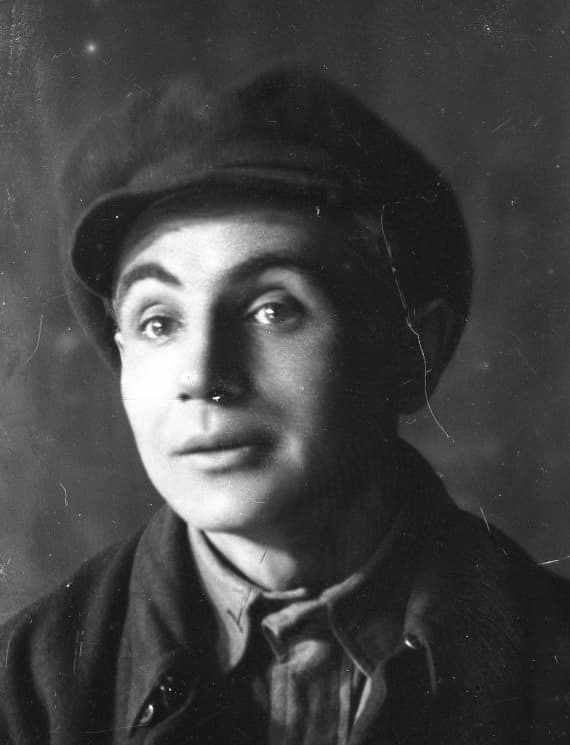Premier: January 8, 1919
Director: Les Kurbas
Artist: Anatol Petrytskyi
Deacon – Lev Piasetskyi
Angels – Halyna Prokhorenko, Olena Rokytianska
Shepherds – Favst Lopatynskyi, Volodymyr Kalyn
Herod – Ivan Yukhymenko
Three Kings – Valerii Vasyliev, Volodymyr Leontovych, Yona Shevchenko
Satan – Marko Tereshchenko
Death – Borys Vasyliev
Rachel – Polina Samiilenko, Ryta Neshchadymenko
Soldiers – Nepytailo, Krok, Nebilia
Old Man – Les Yurskyi
Old Woman – Antonina Smereka
Muscovite – Pavlo Dolyna
Daria Ivanivna – Olha Horodynska
Gypsy Man – Favst Lopatynskyi
Gypsy Woman – Hanna Ihrets
Hungarian Man – Volodymyr Kalyn, Volodymyr Leontovych
Hungarian Woman – Hromova
Polish Man – Yona Shevchenko
Polish Woman – Ryta Neshchadymenko
Zaporozhzhian Kozak – Vasyl Vasylko
Tavern Keeper’s Wife – Ant. Doroshenkova
Jewish Man – Lev Piasetskyi
Jewish Woman – Lavrinova
Priest – Volodymyr Kalyn
Klym – Stepan Bondarchuk
Klym’s Wife – Sofiia Manuilovych
Schoolgirl – Olena Rokytianska
Savochka – Valerii Vasyliev
“The Ukrainian vertep,” wrote Les Kurbas, “is a very interesting page in the history of our drama and theater. It was created by the people based on a well-known biblical story. There is so much folk humor in it! We have to recreate it as a bright picture of our past. We have to take a good look at everything that is hidden in this work, which emerged from the masses and is the manifestation of our soul.”
The Christmas Vertep appeared on the stage of the Young Theater in 1919. Kurbas wanted to create a modern vertep drama. To do this he even announced in the press a contest for a text “in which modern political and cultural life would be reflected in humor, satire and poetry.” But the initiative was a failure and Berezil ended up doing their own production based the classical vertep text by Sokyrynskyi, published by Oleksandr Kysil shortly beforehand.
Satirist Yakov Otruta was invited to work on the modern part of the script. His task was to write satirical poems about Hetman Skoropadskyi, but this part of the interludes didn’t make it into the final version. Actor Vasyl Vasylko recalled that the rehearsals for this part of the show were held in secret: “Everyone was forbidden to talk about this work, which was supposed to be our protest against the occupation of Ukraine.” It was important for Kurbas to raise social issues in his shows, but he probably decided to emphasize other things in Christmas Vertep due to the changing political situation.
Set designer Anatol Petrytskyi created a two-story life-size vertep puppet theater. Events associated with the birth of Jesus took place upstairs and the interludes took place downstairs. He drew red silhouettes of two Kozak Mamais in Ukrainian primitive folk art style on two wide canvases that functioned as stage portals. The actors recalled that the vertep box was covered in colored paper with silver and gold foil (the way vertep performers used to decorate their puppet theaters) and some costumes were made of painted gauze and colored paper. Despite the difficult time and financial problems, the visual part of the show was top-notch.
Kurbas gave the actors interesting but difficult assignments: “The actors must play dolls – they must move like dolls. The mythical characters that perform on the top platform should talk mechanically like dolls, and those who play real characters on the bottom platform will talk like ordinary people.” This was supposed to improve the actors’ skills, develop their stage capabilities and diversify their tools of expression, but it wasn’t easy for the Young Theater actors and even caused an internal conflict, which was fueled by several other factors. Some truly didn’t understand the purpose of these experiments, while others wanted to undermine Kurbas’s authority. Ultimately, he stepped down as the show’s director and head of the association, but the conflict resolved itself within a month.
The Ukrainian vertep was never an archaic event: the first act (biblical) had its own canons, but in the second earthly characters spoke about topics that worried the audience, and Herod could be compared to a ruler of the time. It was probably the relevance and liveness of the vertep tradition that interested Kurbas, who wanted to actualize Ukrainian folk theater for the urban audience of the 20th century and talk to them about present-day issues in a theatrical format.
The participants of the show recalled that the emphasis in Christmas Vertep was on the interludes, where the characters could be given more freedom in what they say. Although in the first part, actor M. Tereshchenko, who played Satan, was also allowed to improvise and express himself about topical issues. Other actors were very jealous, because it was his witty comments that got a wild reaction from the audience.
However, contemporaries recalled that it was Ryta Neshchadymenko, who played the tragic role of Rachel, that took center stage. Rachel loses her child because of King Herod’s orders that all children be killed. The scene “Rachel Weeping” aroused strong sympathy from the audience. “Even though it was puppetry, Ryta Neshchadymenko as Rachel achieved a truly high level of tragedy, surpassing all the others with her acting,” said actor P. Kovalenko.
The other actors also created brilliant images – in particular, Ivan Yukhymenko (Herod), Borys Vasyliev (Death), Vasyl Vasylko (Zaporozhzhian Kozak), and others.
In Christmas Vertep, Kurbas continued to work on improving the technique of the Young Theater actors by mastering different genres and styles of acting. He wrote: “If there are exercises to control one’s nerves, then there can also be exercises to understand the mechanics of human movement.” Kurbas called the show an experiment, but this experiment became another gem in the Young Theater’s treasure chest. Actor Yona Shevchenko, who played one of the Three Kings, reflecting on Kurbas’s productions such as Woe to the Liar and Vertep, wrote in the journal Theater Barricades: “For the first time at the Young Theater there is an understanding of the true essence and nature of theater, the understanding of theater as a game…”

